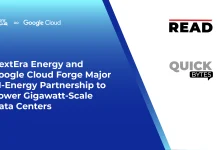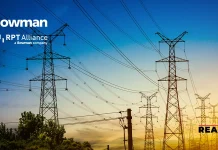NTT, in partnership with Mitsubishi Heavy Industries Group, has successfully demonstrated the world’s most efficient optical wireless power transmission (OWPT) under atmospheric interference. The trial achieved a record 152 W of electric power transmitted over a distance of 1 km with 15% efficiency, setting a new benchmark in the field.
This achievement represents a major step forward in developing technologies that can reliably deliver power across long distances where cables are impractical-such as in disaster recovery zones or future space-based power systems.
The research findings were published in the August edition of Electronics Letters under the title: “Demonstration of 15% Efficient Optical Wireless Power Transmission Over 1 km With Atmospheric Turbulence.”
Wireless Power Transmission: Microwaves vs. Optical Beams
Current wireless power transmission technologies primarily use microwave-based systems. While practical, these methods are constrained by challenges in range, cost, efficiency, and reliability-especially when operating under real-world atmospheric interference such as wind or ground heating.
Also Read: Microchip Unveils DualPack 3 Power Modules to Deliver High Power Density
In contrast, optical transmission using laser beams offers stronger directionality and the potential for higher efficiency. However, the conversion of laser beams into electricity over long distances is notoriously inefficient, largely due to atmospheric turbulence and limitations in photoelectric conversion technology. Improving long-distance efficiency requires enhancing the uniformity of laser beam intensity during propagation.
A Record-Breaking Demonstration
To address these challenges, NTT and MHI jointly developed a novel beam-shaping system. NTT designed and implemented the transmission optics, including an axicon and concave lens setup to create a flatter laser beam, while MHI developed the photodetector systems, including light-receiving panels, beam homogenizers, and bypass capacitors to stabilize current output under turbulence.
The field experiment took place in January and February 2025 at Nanki-Shirahama Airport in Wakayama Prefecture, Japan. A laser transmission booth was positioned at one end of the runway, with a reception booth located 1 km away.
Despite strong atmospheric turbulence caused by ground-level heating and wind, the test achieved:
-
152 W of average electrical power extraction from the receiving panel
-
15% overall transmission efficiency (ratio of received power to transmitted power)
-
Continuous power delivery sustained for 30 minutes
These results demonstrate the feasibility of long-duration optical wireless power transmission even under challenging environmental conditions.
This demonstration marks the highest-ever optical wireless power transmission efficiency achieved using a silicon-based photoelectric conversion element under atmospheric interference. The success underscores the potential of OWPT technology for real-world energy delivery applications, paving the way for future advancements in resilient infrastructure and space energy systems.




